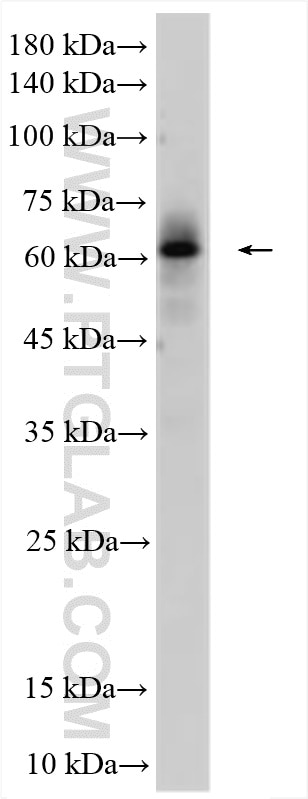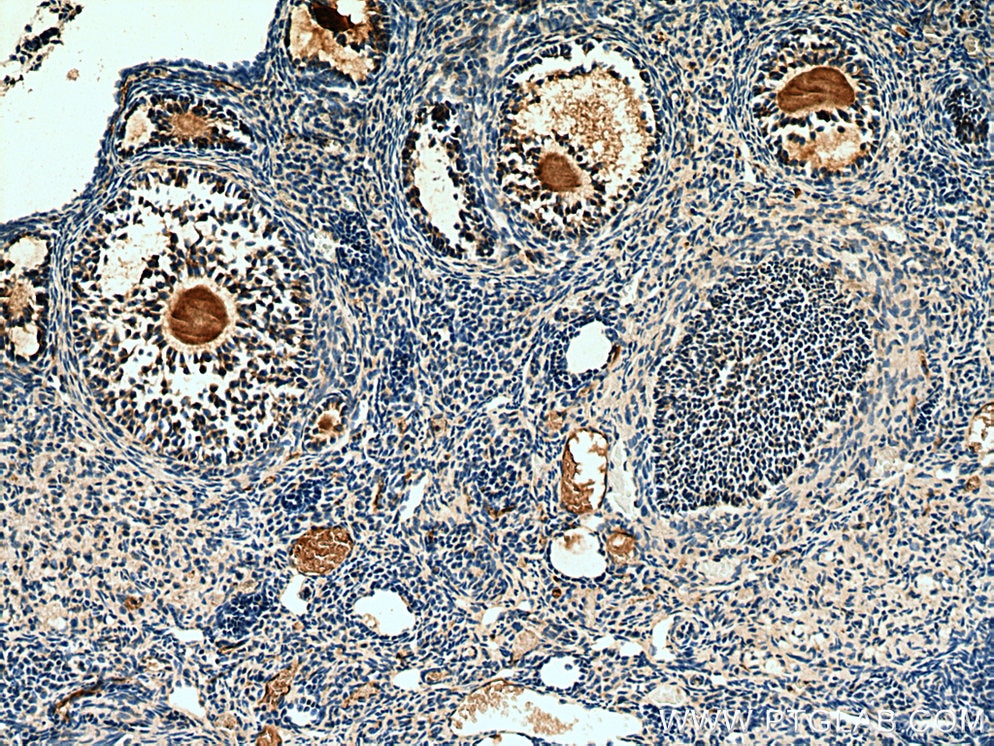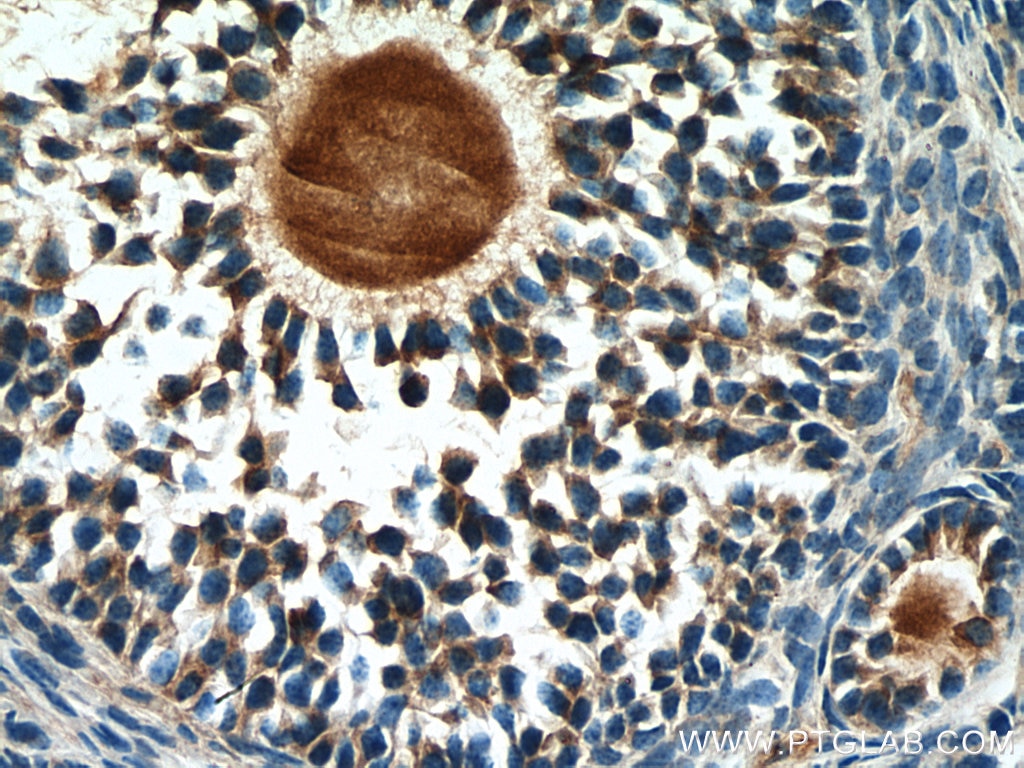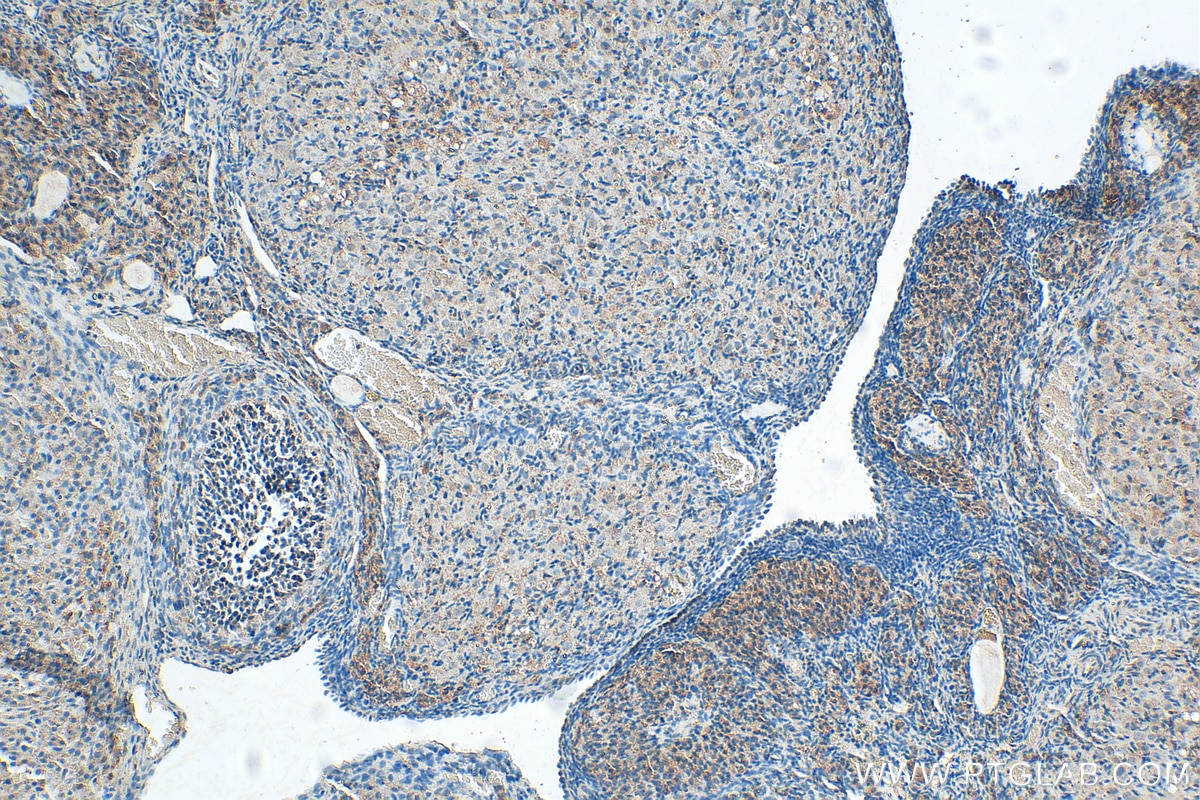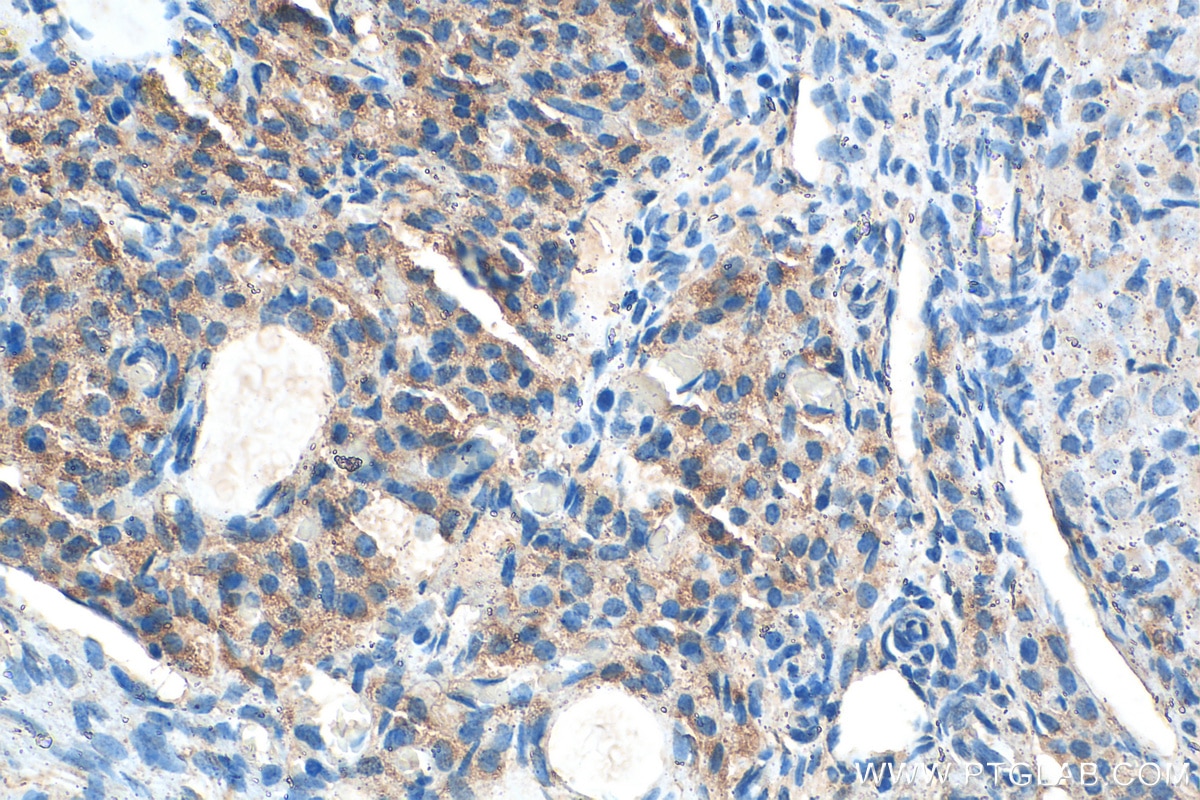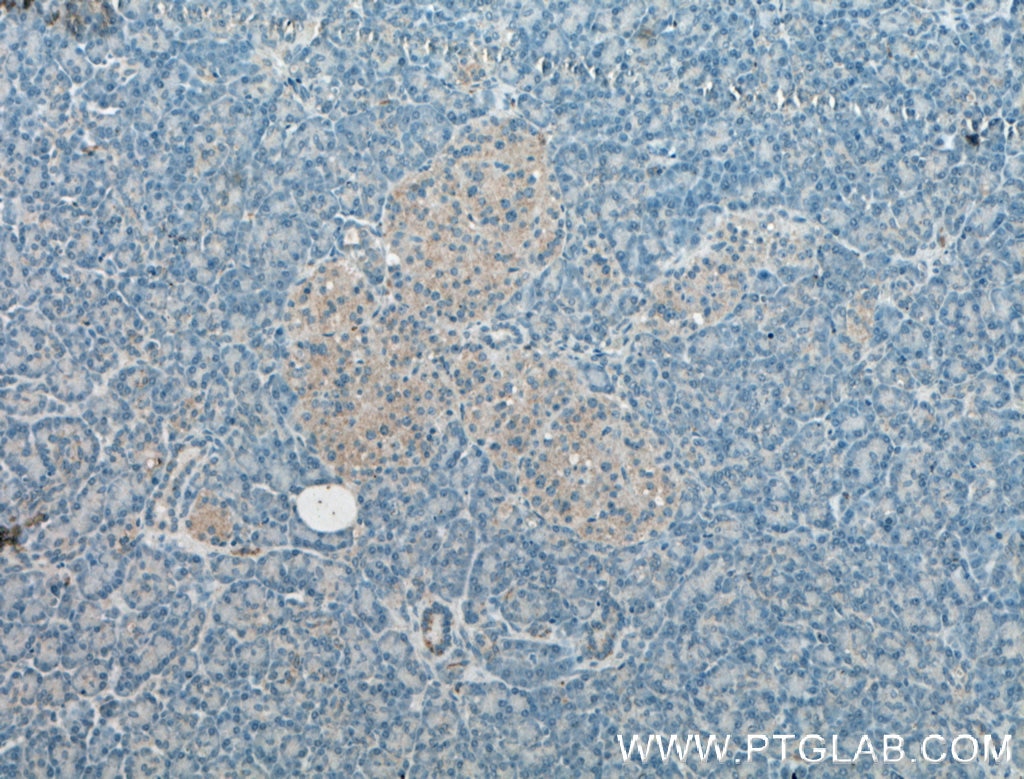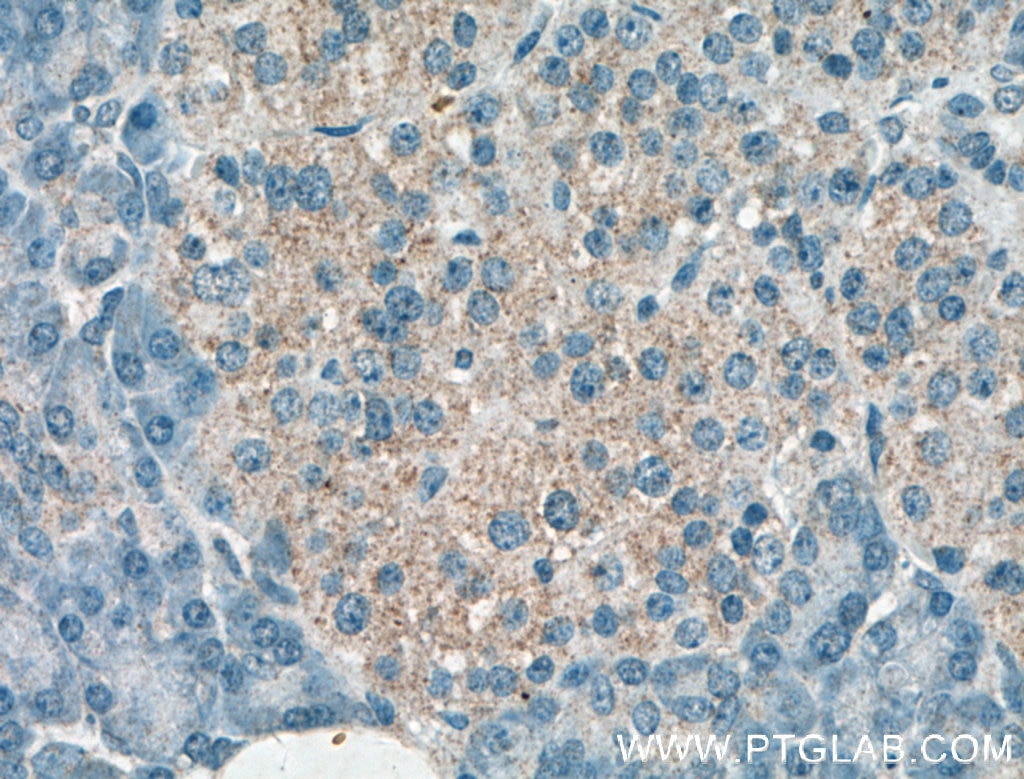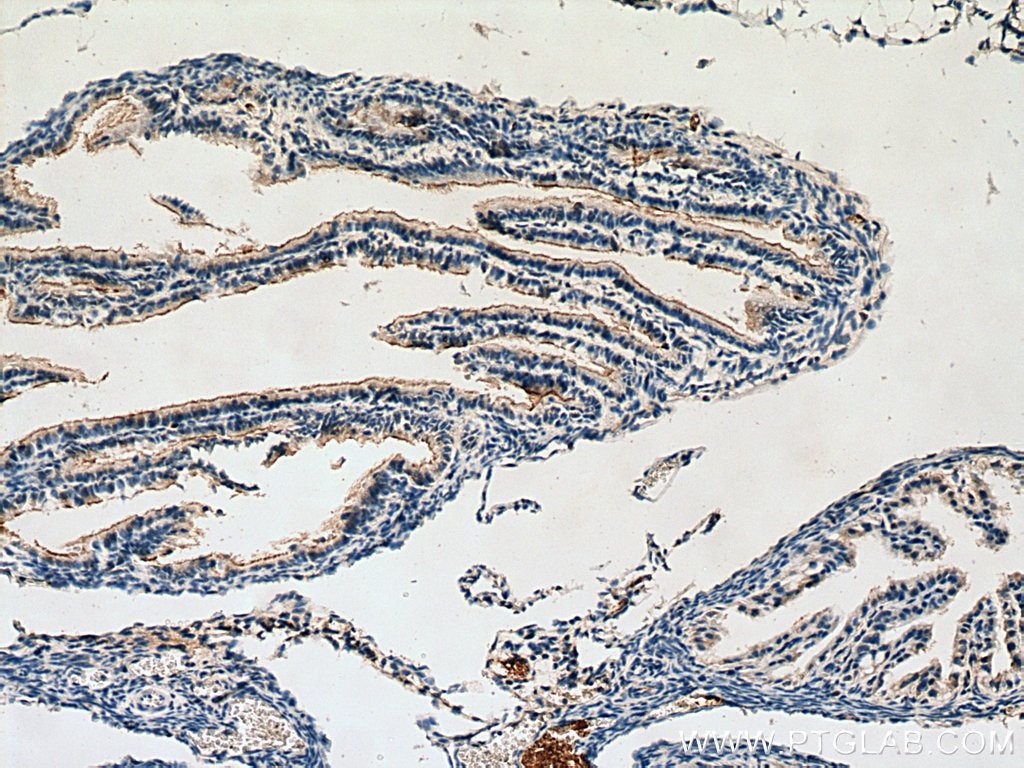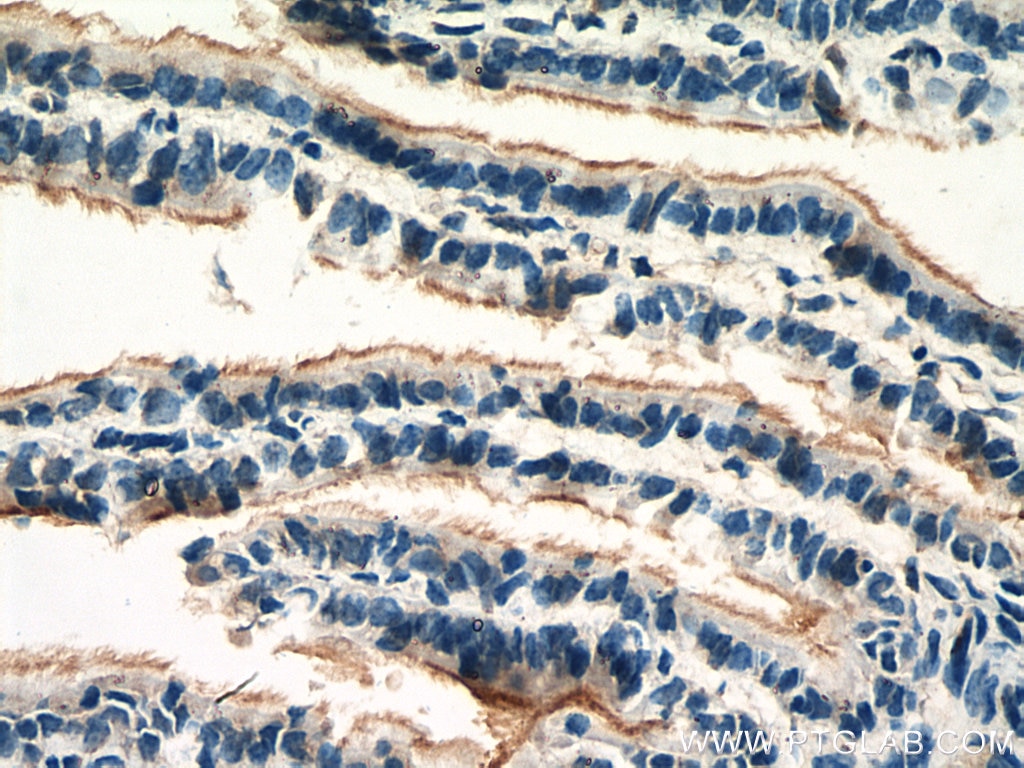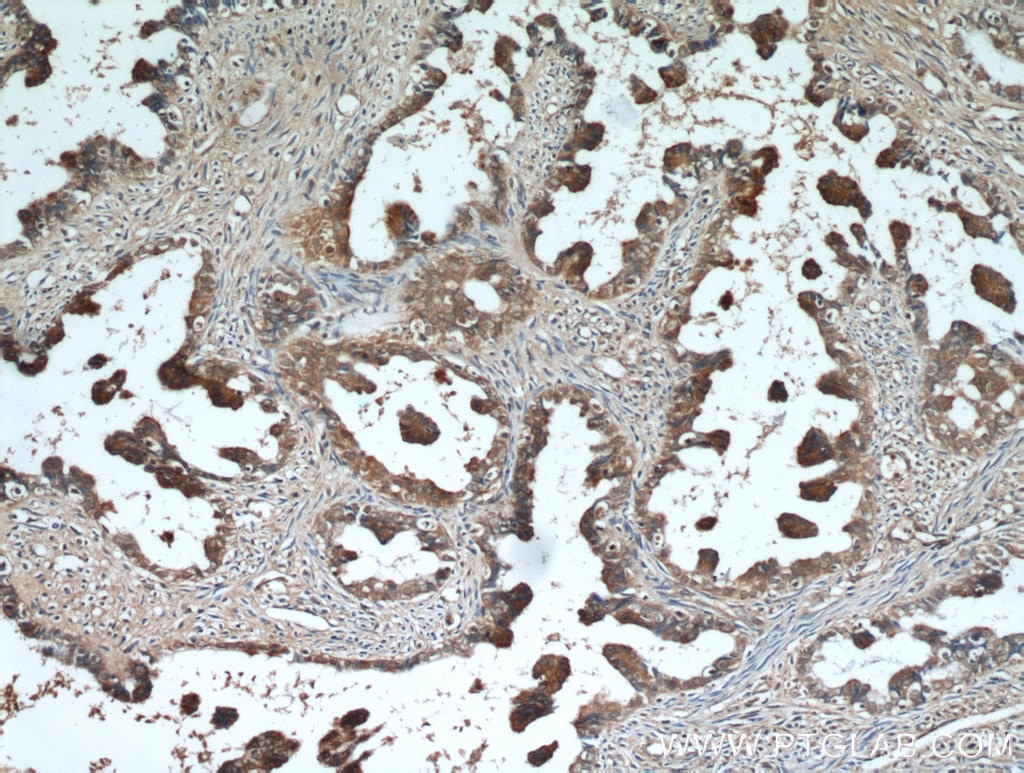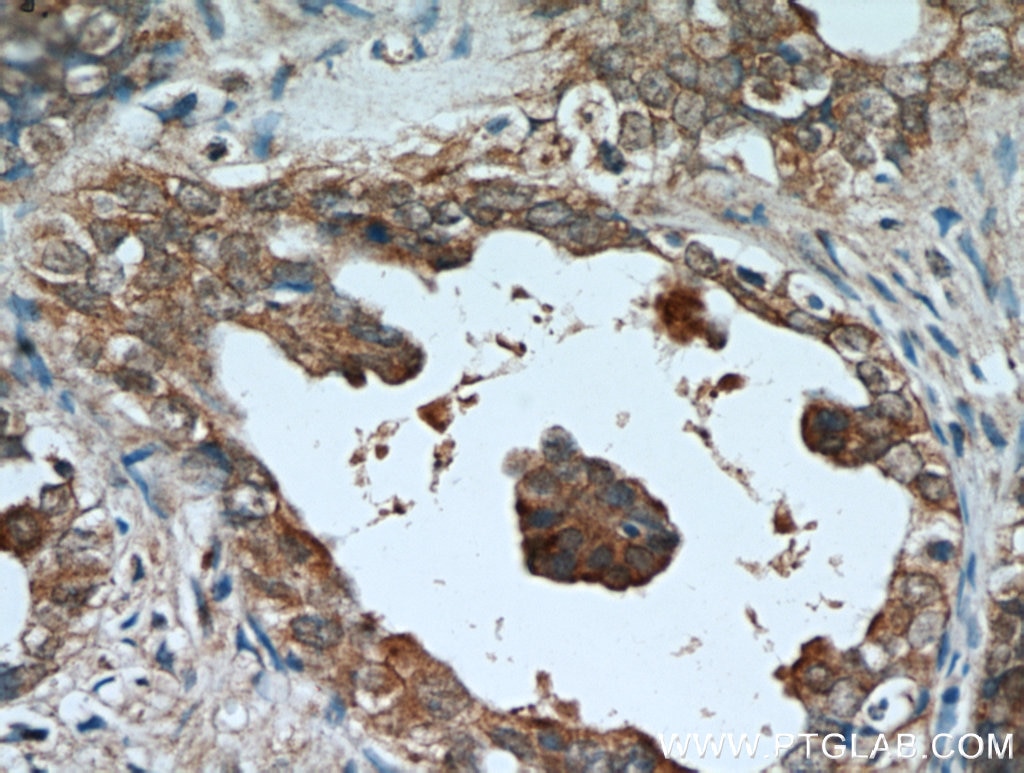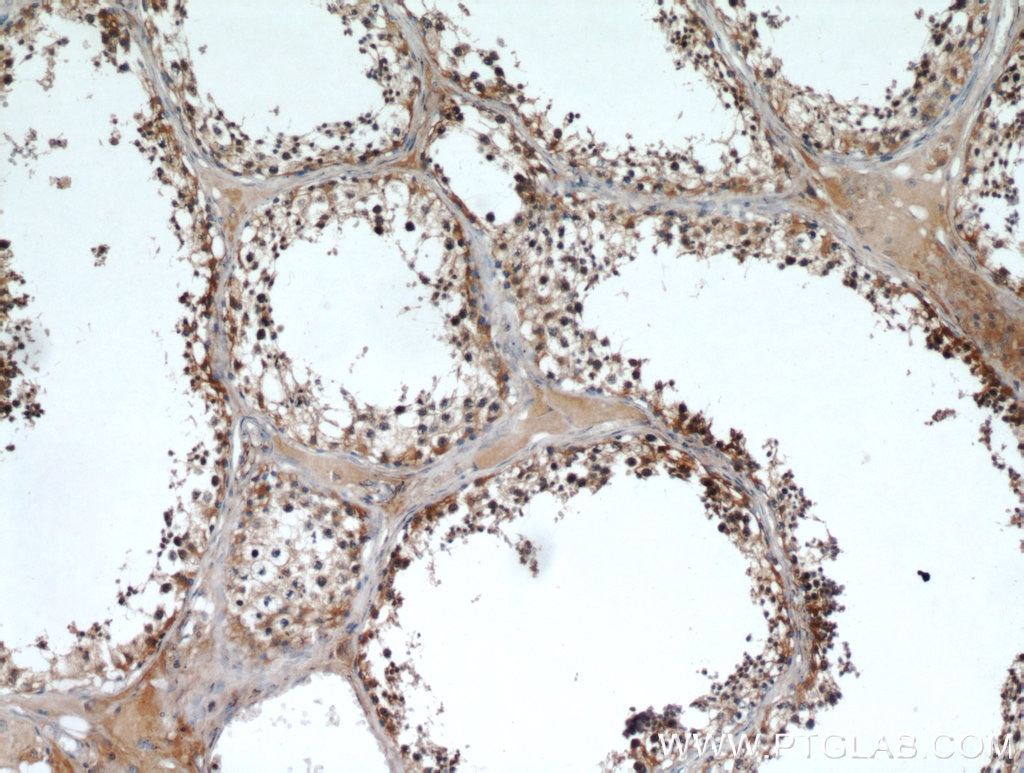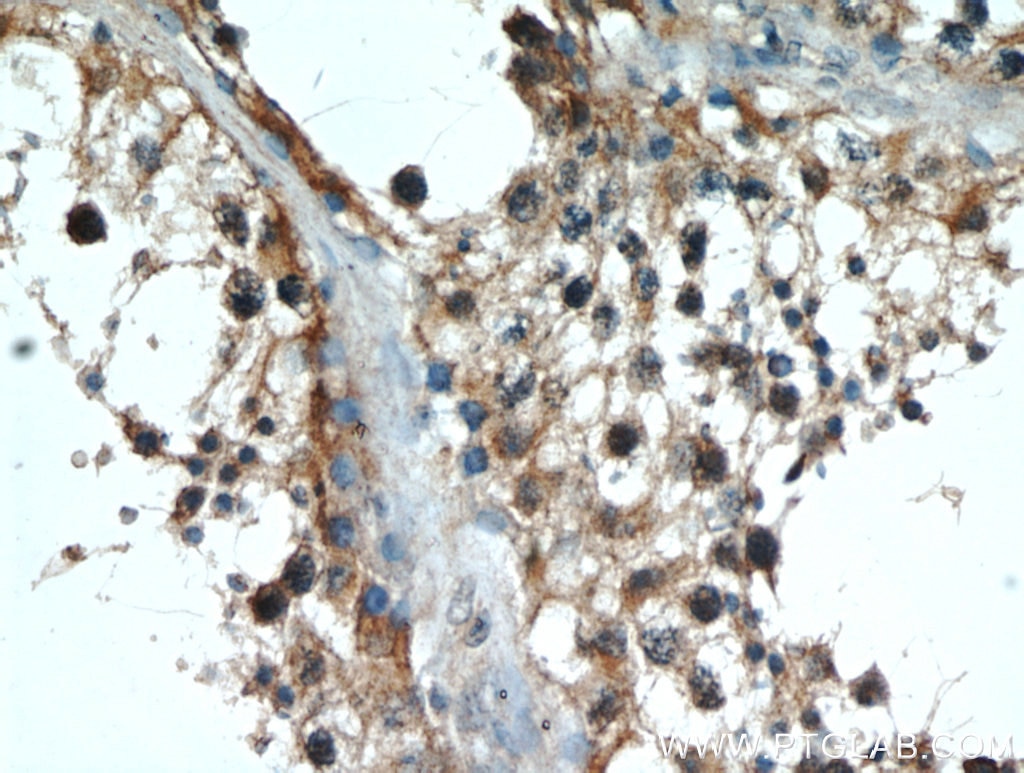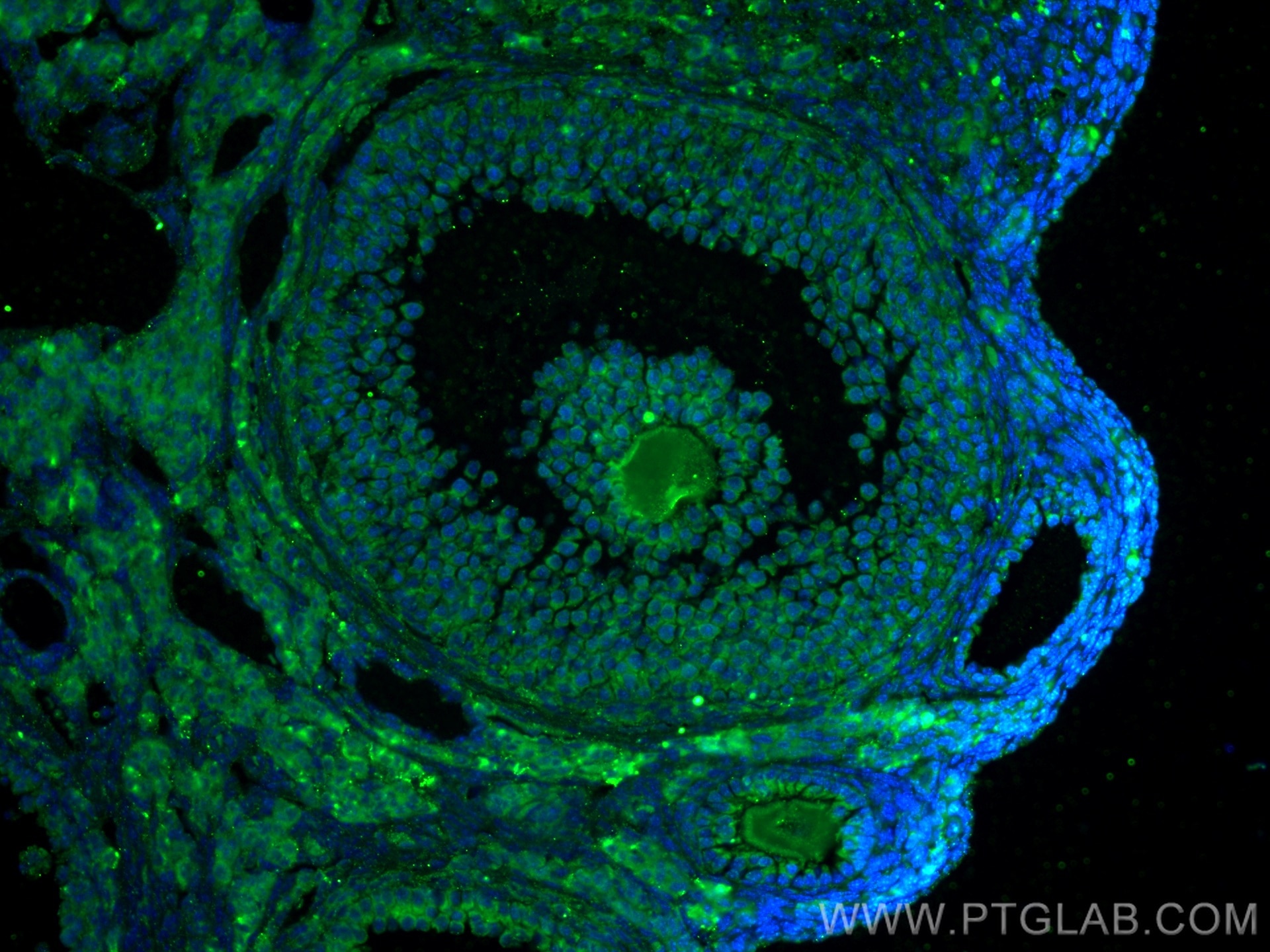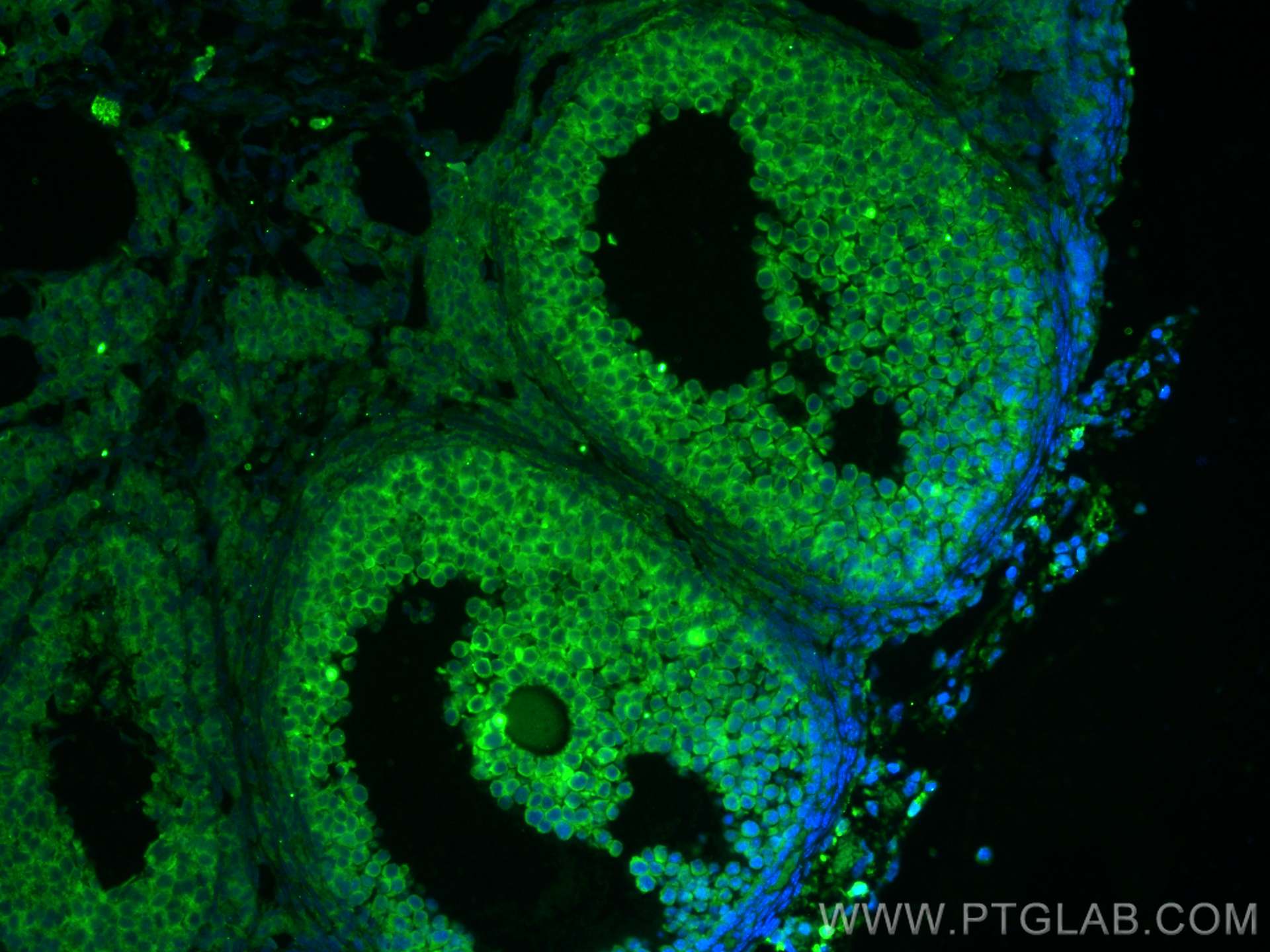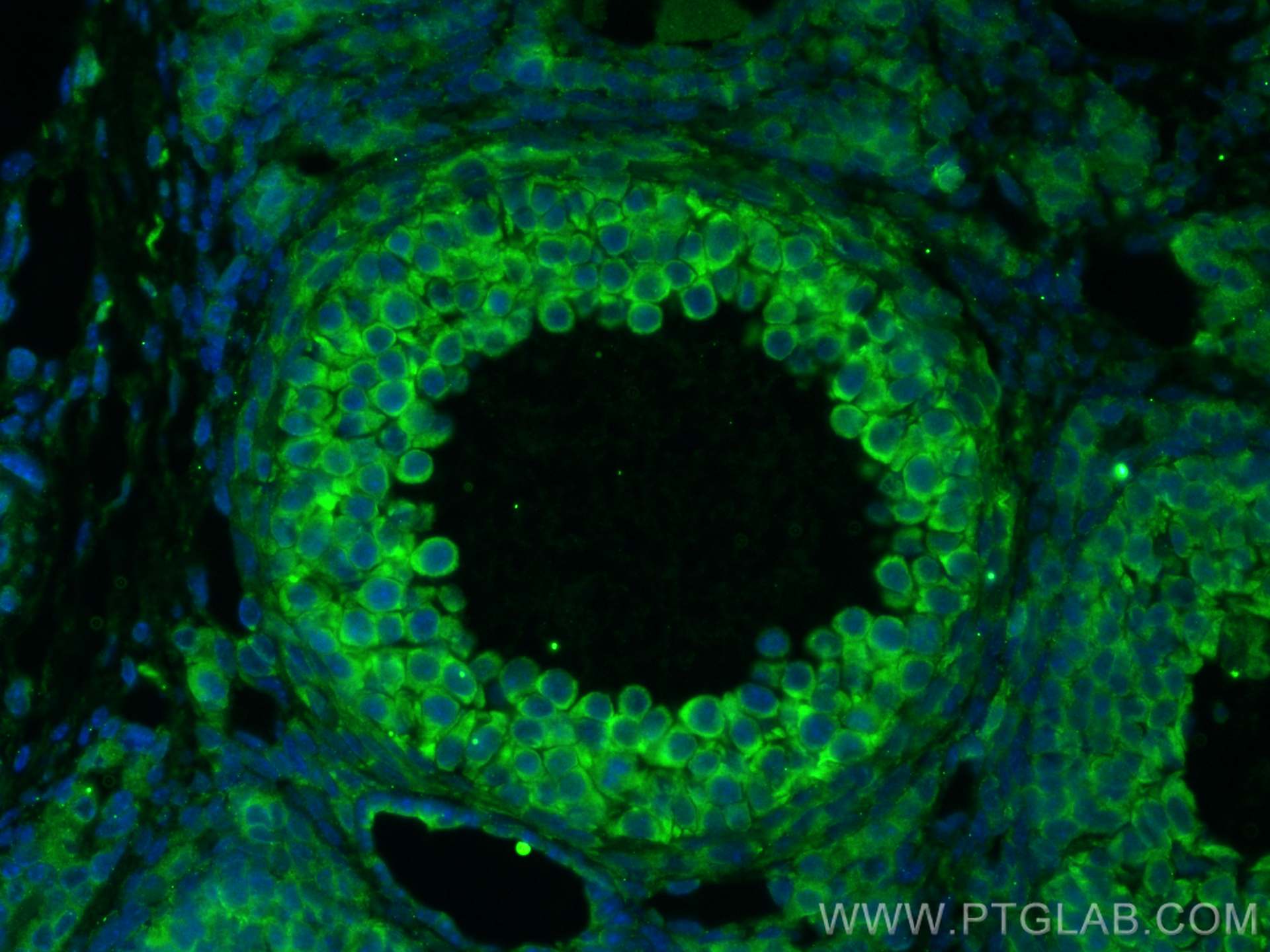- Phare
- Validé par KD/KO
Anticorps Polyclonal de lapin anti-AMH
AMH Polyclonal Antibody for WB, IHC, IF-P, ELISA
Hôte / Isotype
Lapin / IgG
Réactivité testée
Humain, rat, souris et plus (3)
Applications
WB, IHC, IF-P, ELISA
Conjugaison
Non conjugué
N° de cat : 14461-1-AP
Synonymes
Galerie de données de validation
Applications testées
| Résultats positifs en WB | tissu testiculaire humain, |
| Résultats positifs en IHC | tissu ovarien de souris, tissu de tumeur ovarienne humain, tissu ovarien de rat, tissu pancréatique humain, tissu testiculaire humain il est suggéré de démasquer l'antigène avec un tampon de TE buffer pH 9.0; (*) À défaut, 'le démasquage de l'antigène peut être 'effectué avec un tampon citrate pH 6,0. |
| Résultats positifs en IF-P | tissu ovarien de souris, |
Dilution recommandée
| Application | Dilution |
|---|---|
| Western Blot (WB) | WB : 1:500-1:1000 |
| Immunohistochimie (IHC) | IHC : 1:50-1:500 |
| Immunofluorescence (IF)-P | IF-P : 1:50-1:500 |
| It is recommended that this reagent should be titrated in each testing system to obtain optimal results. | |
| Sample-dependent, check data in validation data gallery | |
Applications publiées
| KD/KO | See 1 publications below |
| WB | See 11 publications below |
| IHC | See 6 publications below |
| IF | See 3 publications below |
Informations sur le produit
14461-1-AP cible AMH dans les applications de WB, IHC, IF-P, ELISA et montre une réactivité avec des échantillons Humain, rat, souris
| Réactivité | Humain, rat, souris |
| Réactivité citée | rat, Chèvre, Humain, porc, poulet, souris |
| Hôte / Isotype | Lapin / IgG |
| Clonalité | Polyclonal |
| Type | Anticorps |
| Immunogène | AMH Protéine recombinante Ag5670 |
| Nom complet | anti-Mullerian hormone |
| Masse moléculaire calculée | 59 kDa |
| Poids moléculaire observé | 60-65 kDa |
| Numéro d’acquisition GenBank | BC049194 |
| Symbole du gène | AMH |
| Identification du gène (NCBI) | 268 |
| Conjugaison | Non conjugué |
| Forme | Liquide |
| Méthode de purification | Purification par affinité contre l'antigène |
| Tampon de stockage | PBS with 0.02% sodium azide and 50% glycerol |
| Conditions de stockage | Stocker à -20°C. Stable pendant un an après l'expédition. L'aliquotage n'est pas nécessaire pour le stockage à -20oC Les 20ul contiennent 0,1% de BSA. |
Informations générales
Anti-Müllerian hormone (AMH), also called Müllerian-inhibiting substance (MIS), is a hormone that is best known for its production by fetal testes in mammals and as the inhibitor of Müllerian duct development in males. AMH is also expressed in granulosa cells of preantral and small antral follicles in the ovary. More recently, AMH has been studied for its role in ovarian folliculogenesis and as a potential marker of ovarian reserve. The deduced protein sequence of the AMH monomer contains a 25 amino acid secretion specific signal peptide and a monomeric protein of 535 amino acids that, when glycosylated at two glycosylation sites, has a molecular weight of 65-70 kDa. This antibody is specific to AMH.
Protocole
| Product Specific Protocols | |
|---|---|
| WB protocol for AMH antibody 14461-1-AP | Download protocol |
| IHC protocol for AMH antibody 14461-1-AP | Download protocol |
| IF protocol for AMH antibody 14461-1-AP | Download protocol |
| Standard Protocols | |
|---|---|
| Click here to view our Standard Protocols |
Publications
| Species | Application | Title |
|---|---|---|
Basic Clin Pharmacol Toxicol Effects of quercetin on ovarian function and regulation of the ovarian PI3K/Akt/FoxO3a signalling pathway and oxidative stress in a rat model of cyclophosphamide-induced premature ovarian failure | ||
Reprod Sci Menstrual Blood-Derived Endometrial Stem Cells Ameliorate Ovarian Senescence by Relieving Oxidative Stress-Induced Inflammation | ||
Theriogenology miR-140-3p promotes follicle granulosa cell proliferation and steroid hormone synthesis via targeting AMH in chickens
| ||
Comb Chem High Throughput Screen Regulation of Curcumin on Follicle Initiation Rate in Diminished Ovarian Reserve | ||
Tissue Cell HGF-modified human umbilical cord mesenchymal stem cells rescue impaired ovarian reserve function in chemotherapy-induced POI rats by improving angiogenesis while decreasing apoptosis and fibrosis in the ovary |
